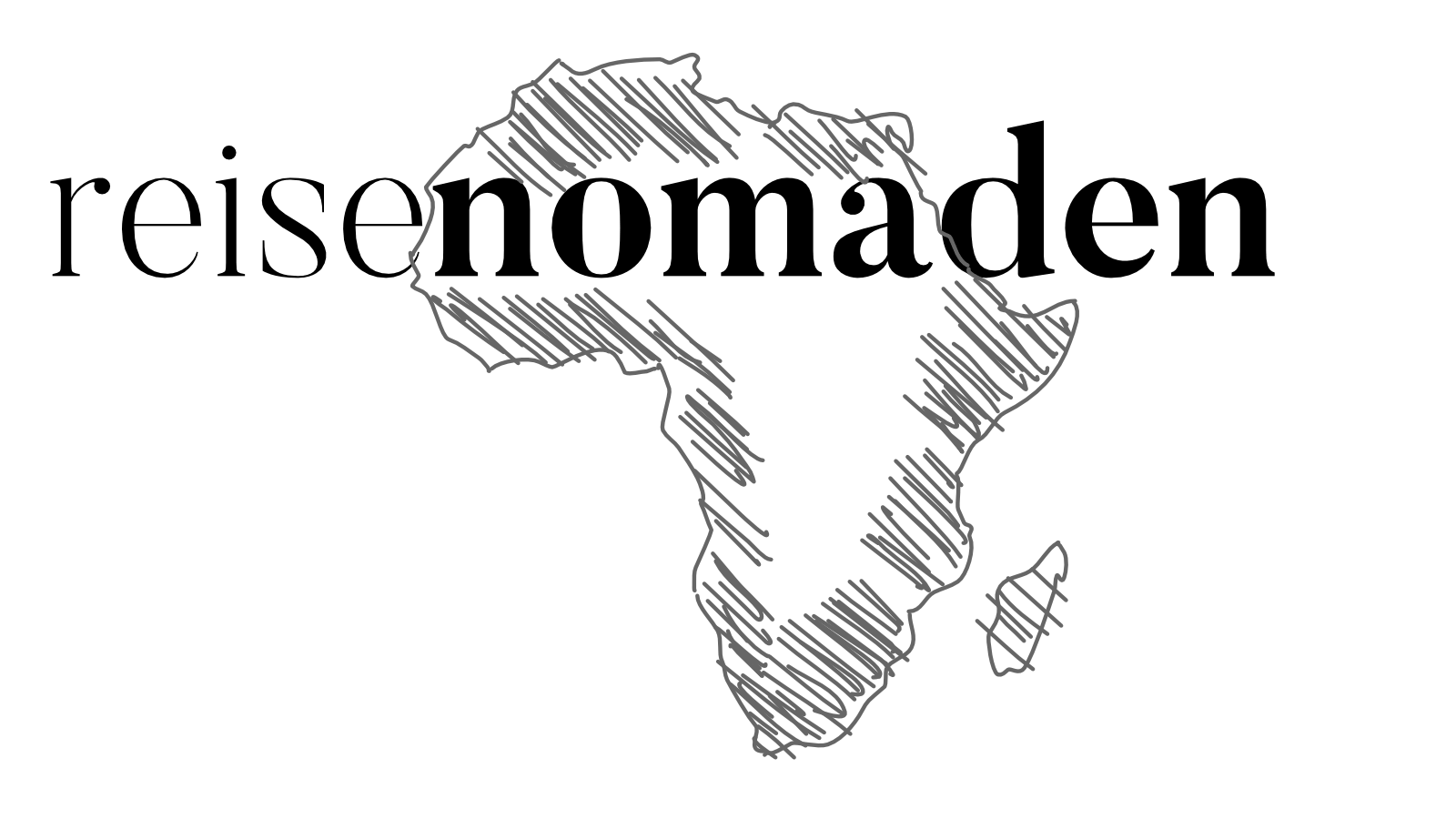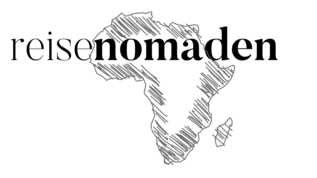We left Botswana satisfied and set out to spend another five weeks or so in Namibia before heading to Switzerland to visit our family. However, we experienced a little excitement before leaving Botswana. A review:
Would you please serve as our anchor?
After leaving the Khwai region, we drove again via Maun to Planet Baobab. There, friends had gotten stuck in the Sowa Pan. They had – despite insistent warnings from locals – driven to Kubu Island and on the way back, shortly before Nata, it happened. We decided against doing our own rescue and phoned around to see if any of the resident recovery companies would be up for the task of driving into the Pan in the conditions and attempting a recovery. Sure enough, that evening (at the very last opportunity) we found what we were looking for.
However, the nice gentleman had to wait until the next morning because he still had to refuel – he was about 200 km away from the place of recovery. Around 10 p.m., we received a WhatsApp from the stranded that they had managed to free themselves on their own with the help of all the (very extensive) recovery equipment. Guido immediately informed the rescuer and he had indeed not yet left. The two got away with the fright without costs and damages at the end. All’s well that ends well.
From Gobabis to Windhoek and on to Swakopmund
We followed the Trans-Kalahari Highway and reached Namibia before Gobabis. From there we drove to Windhoek, stocked up on supplies and headed to Swakopmund. There were some minor repairs to be made to the camper. For example, the roof needed to be resealed in one spot and the folding step at the entrance to the camper needed to be repaired. The harsh environment and stays away from civilization took their toll. There was something to do here and something to do there. After a total of a good half day at the manufacturer, the cabin looked like new again. We stayed in Swakopmund for a week, walked by the sea, had the 40,000 km service done at Toyota and allowed ourselves plenty of rest.
Another visit to Spitzkoppe
Sonja mentioned the wish to visit Spitzkoppe again and so we drove there directly from Swakopmund and camped for two days at the foot of the big Spitzkoppe. It was less crowded than in mid-September, during our first visit. We camped at site 11b and were pleased with our choice. Our goal was to spend the time in Namibia quietly and to devote ourselves to places we did not yet know or wanted to visit again. For various reasons, we did not want to leave the country before our departure, so we considered a pleasant route that would take us mostly to the south.
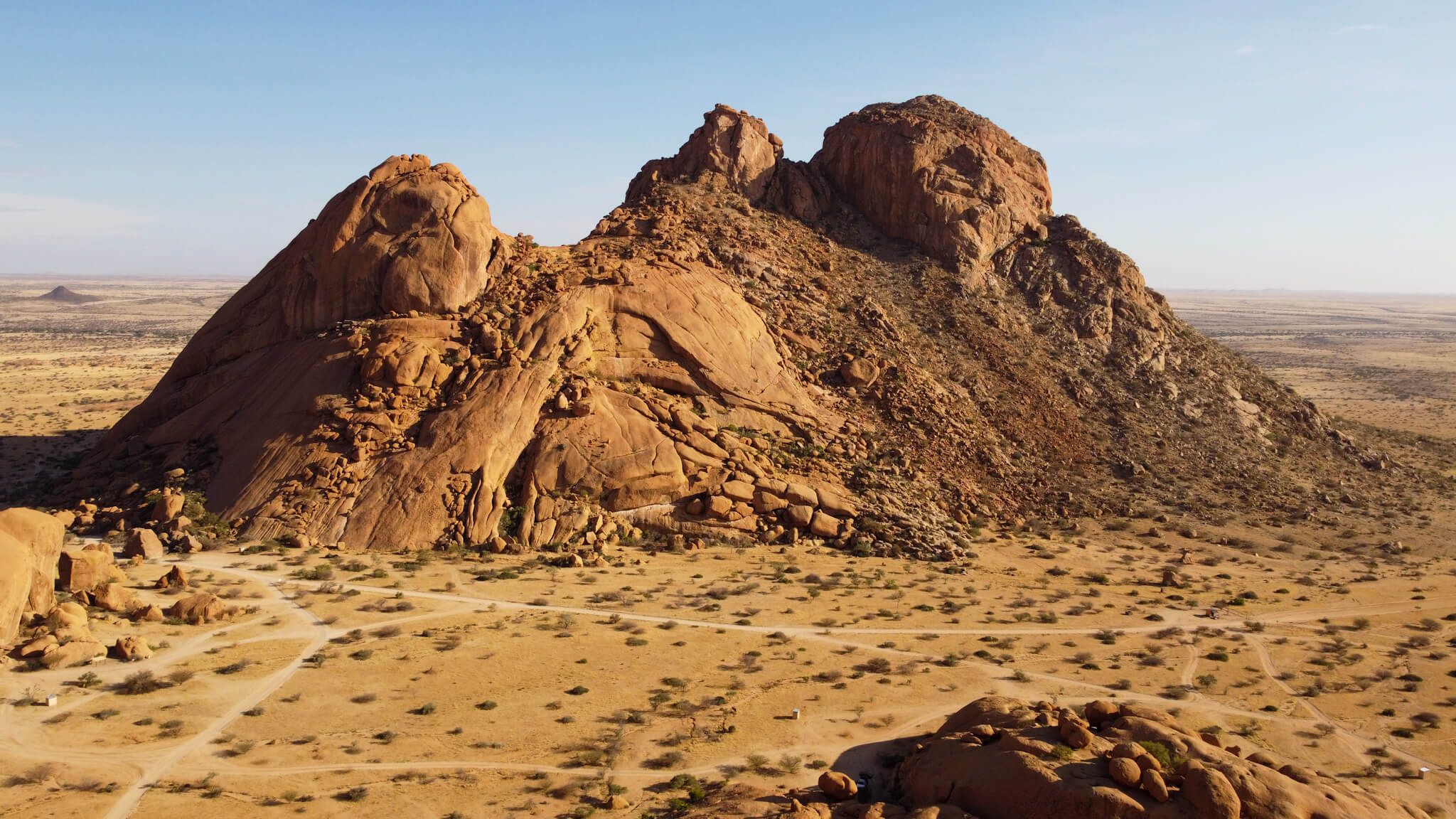
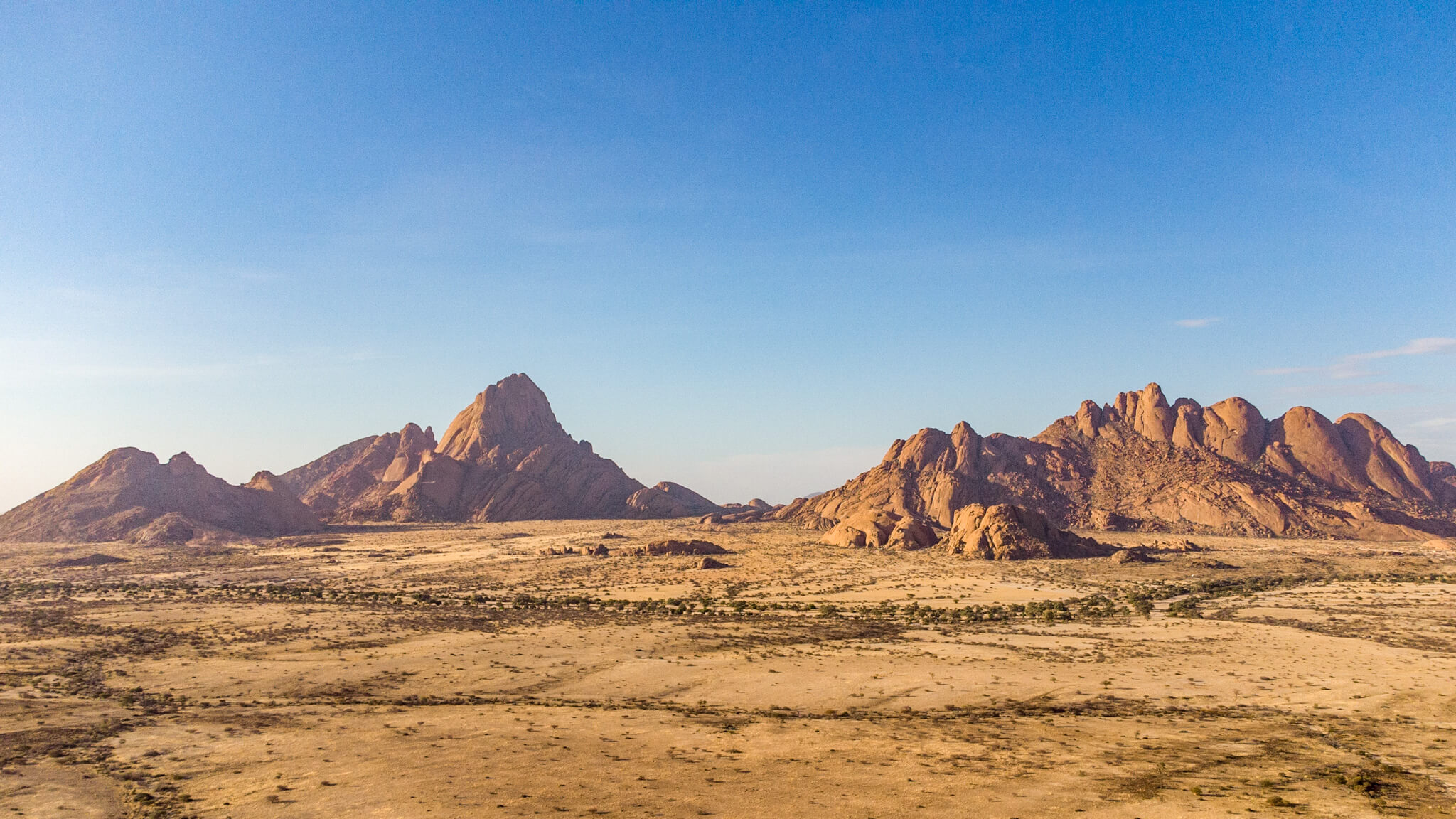
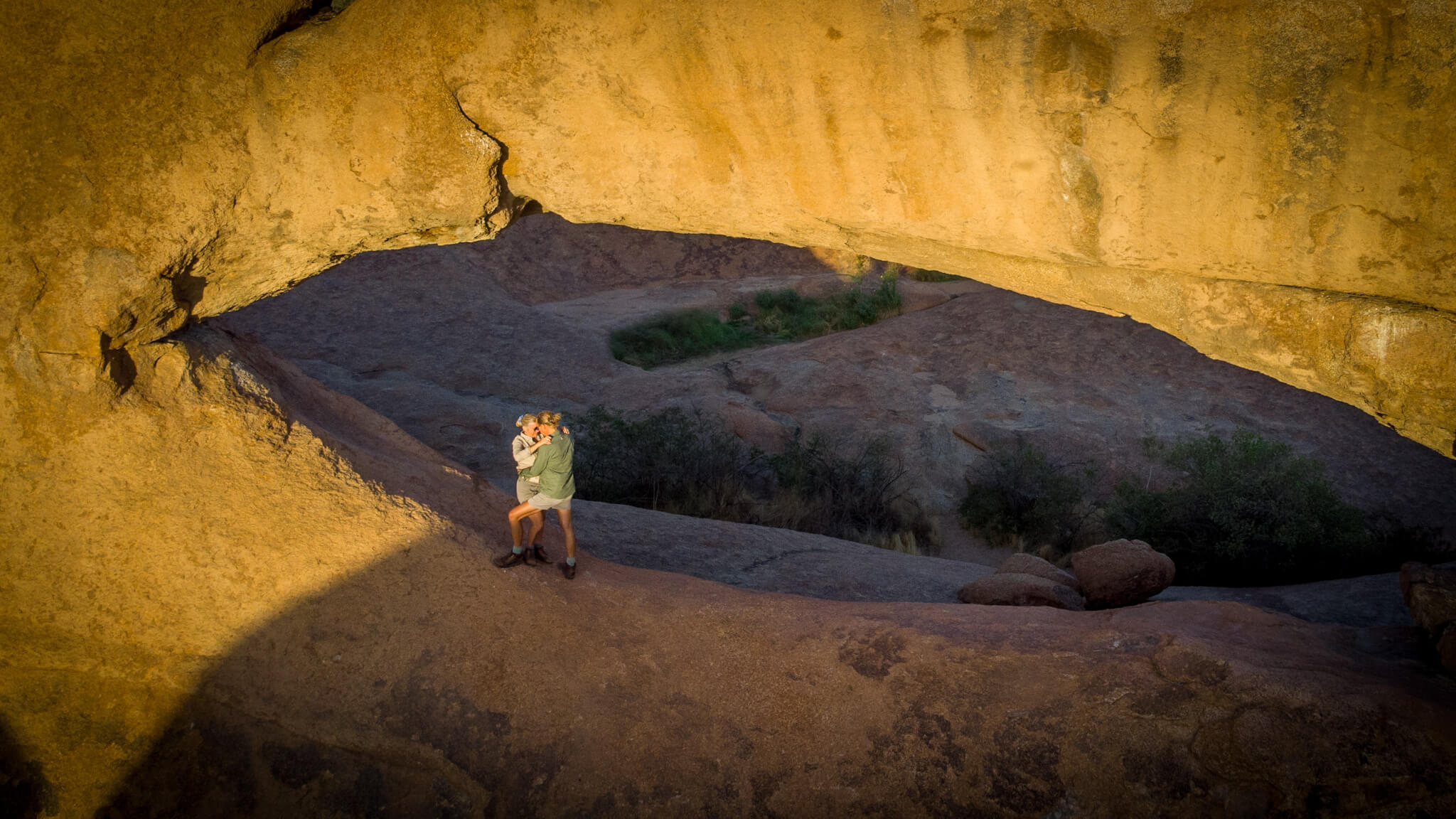
Etosha or Kgalagadi?
We still wanted to include some wildlife and so we discussed whether we wanted to spend a few days in Etosha National Park or alternatively pay another visit to the Kgalagadi Transfrontier Park. Here we would have the advantage, of the still valid South African Wildcard. We would not have to pay an entrance fee. Since the camping costs were pretty much 50% of the (exorbitant) prices in Etosha and we would then already be in the south of the country, the decision was quickly made. An additional convenience is the following circumstance:
There is the Namibia own border crossing at Camp Mata Mata. You leave Namibia with a stamp, but you do not enter South Africa! In Mata Mata there is only a South African official who examines the passports and the vehicle documents. If one now – after whatever time – leaves Mata Mata again and returns to Namibia, only on this day a regular, stamped entry into Namibia takes place again. This means that any visitor who does this will be in “no man’s land” during their stay in the park, and will save days in both Namibia (officially stamped out) and South Africa (never stamped in and thus officially not present) on the 90 possible days to visit. Perfect for long term travelers who need to count days!
Via Elephant Rocks and the Brandberg back to the coast
From Spitzkoppe the way led us comfortably to the Brandberg. We camped again at White Lady Lodge, experienced the place and the riverbed very quiet during this visit. Elephants were not in the area. On our drive around the Brandberg, we decided to spend the night at Elephant Rocks Camp. The first picture makes it clear why the camp has this name. We were the only guests, enjoyed the silence and climbed the mountain in the evening. From there we had a wide view over the plain and – on the other side – to the Brandberg. It is so big that even 14 mm focal length was not enough to image it completely! The original plan would have been to drive around the Brandberg – with an overnight stay at Rhino Ugab Camp. The journey was too tedious for Guido and the announced rain in the region was not to his liking. Guido was slowly but surely in rest mode and didn’t feel like adventures in riverbeds anymore. So we changed the plan and drove back to the coast via the C-roads.
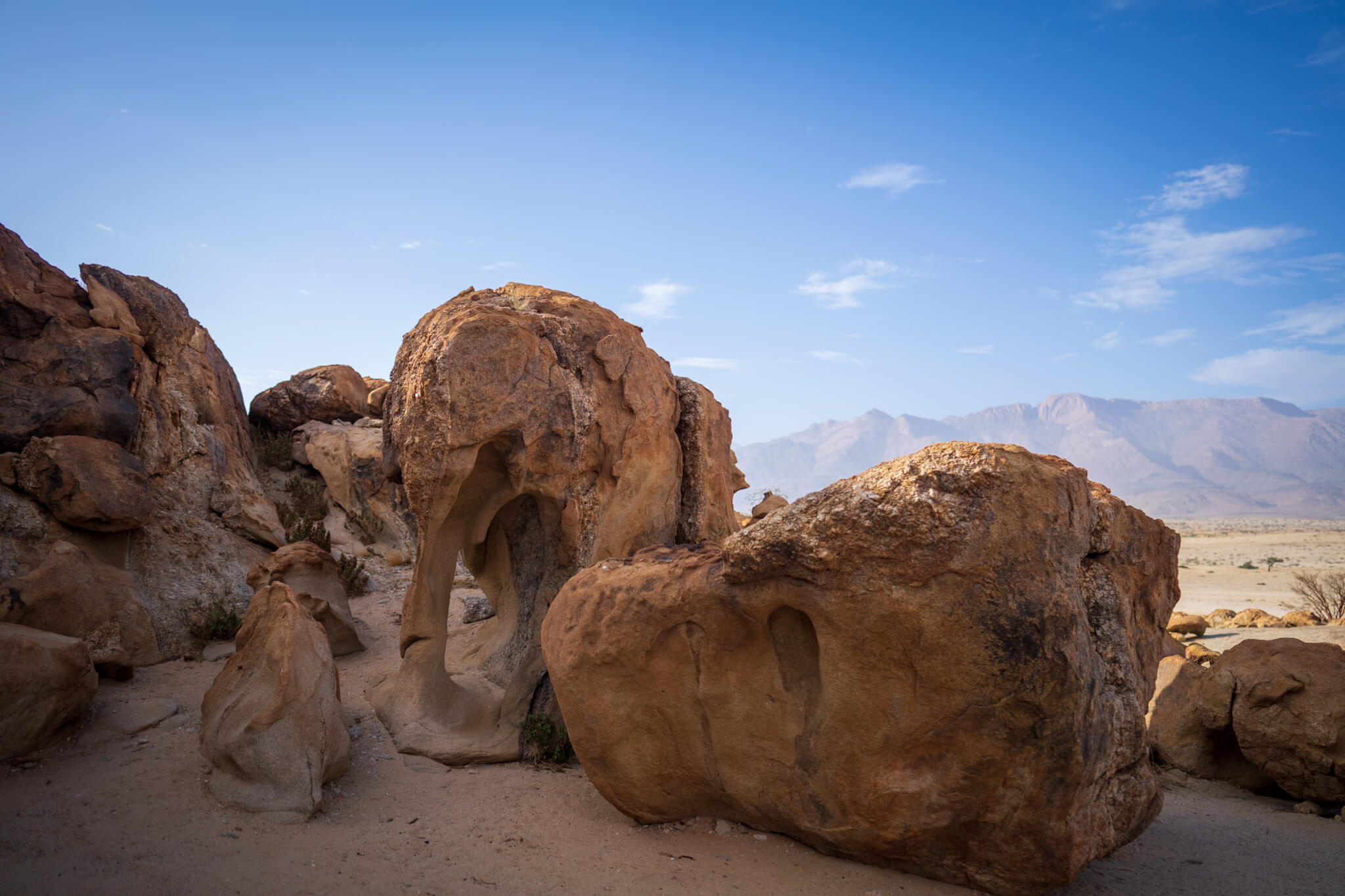
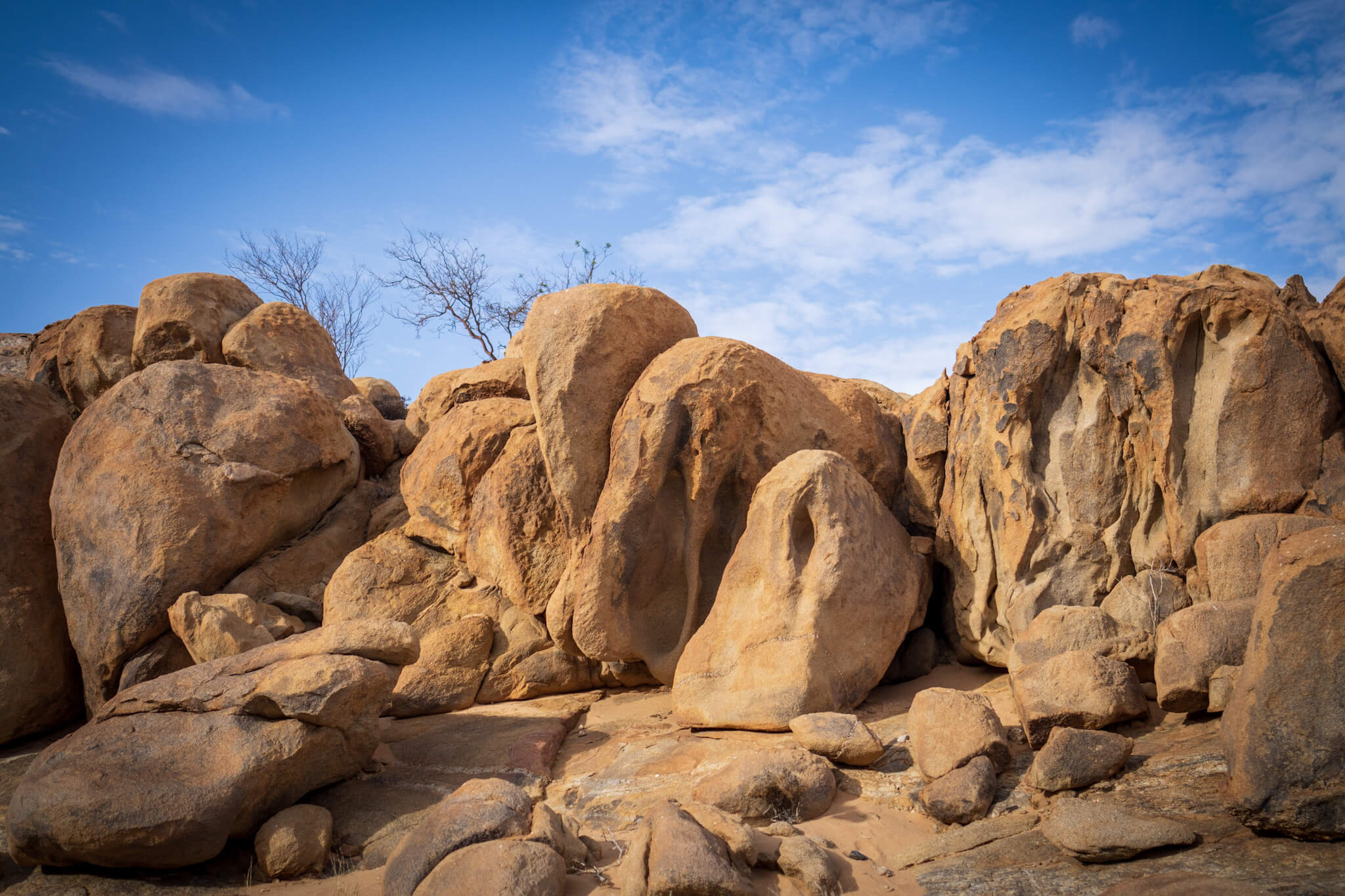
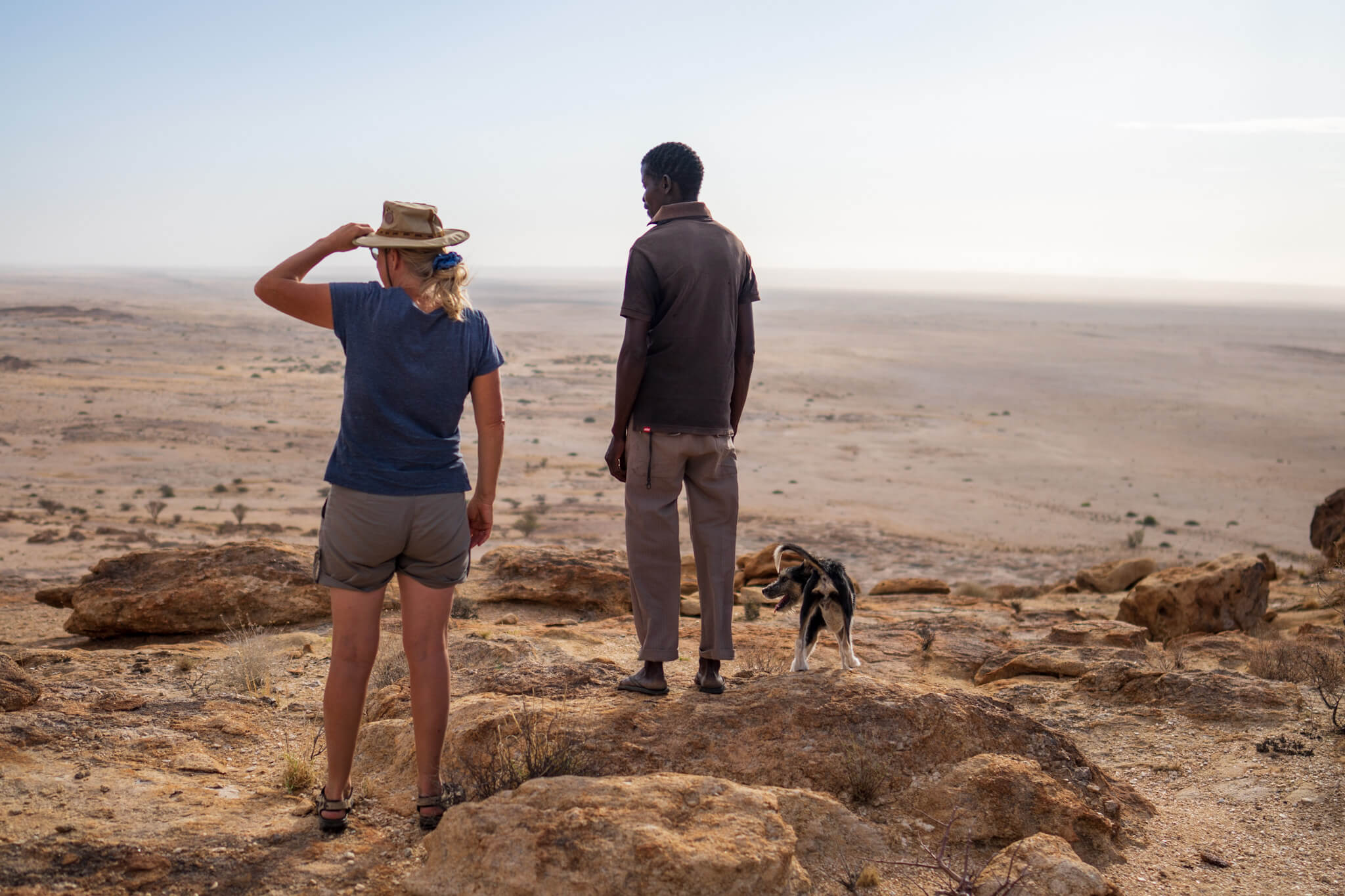
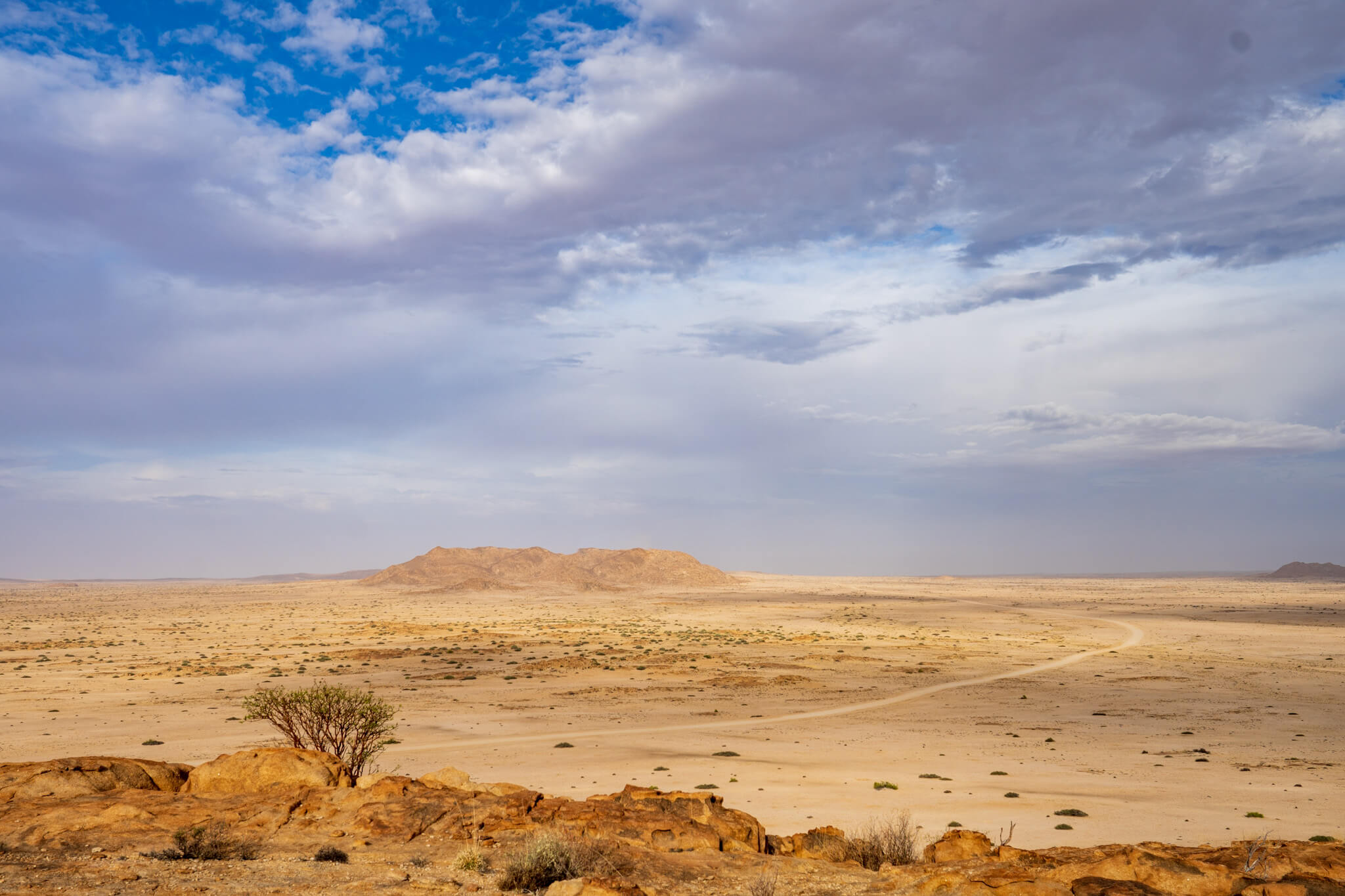
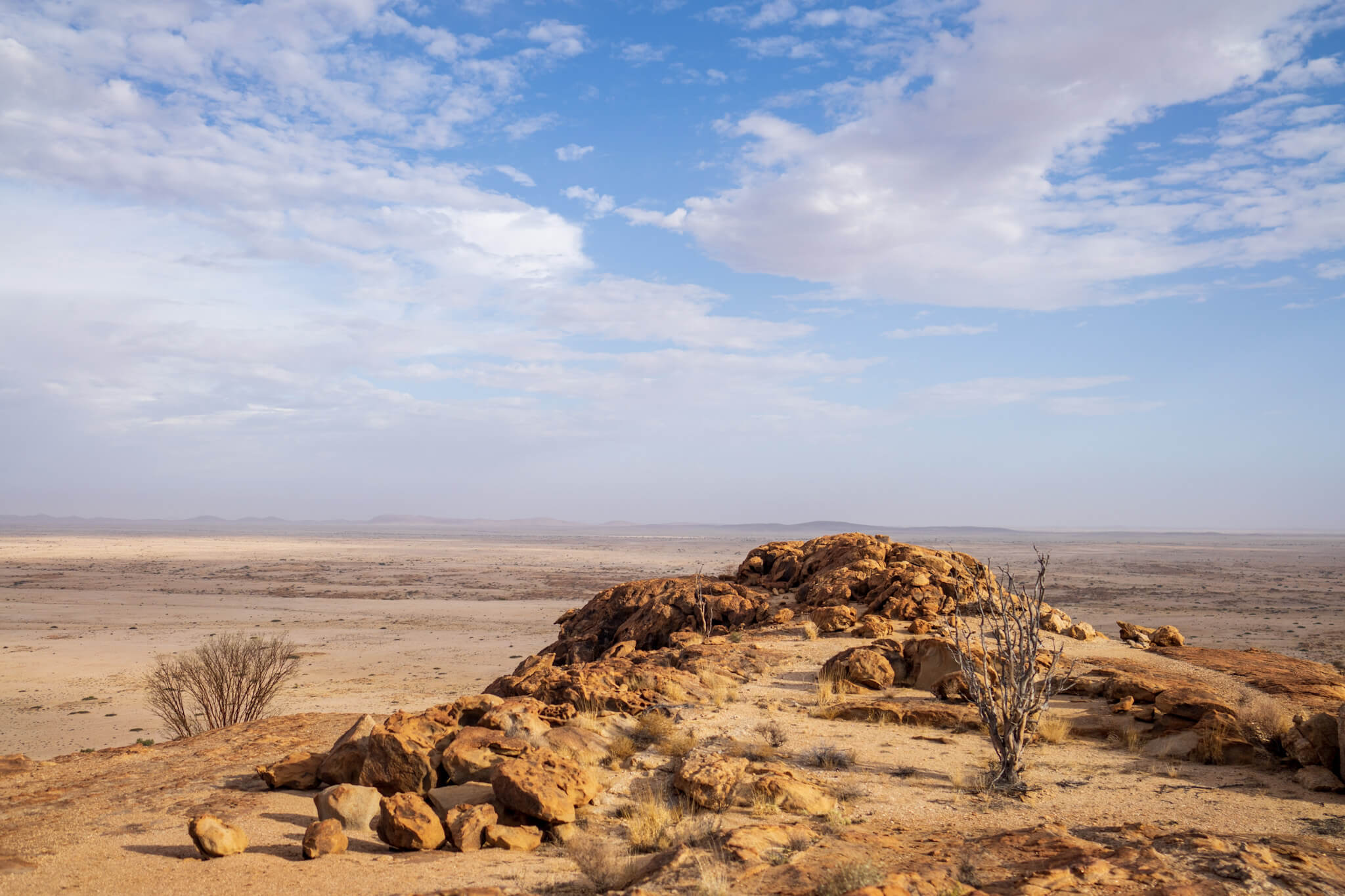
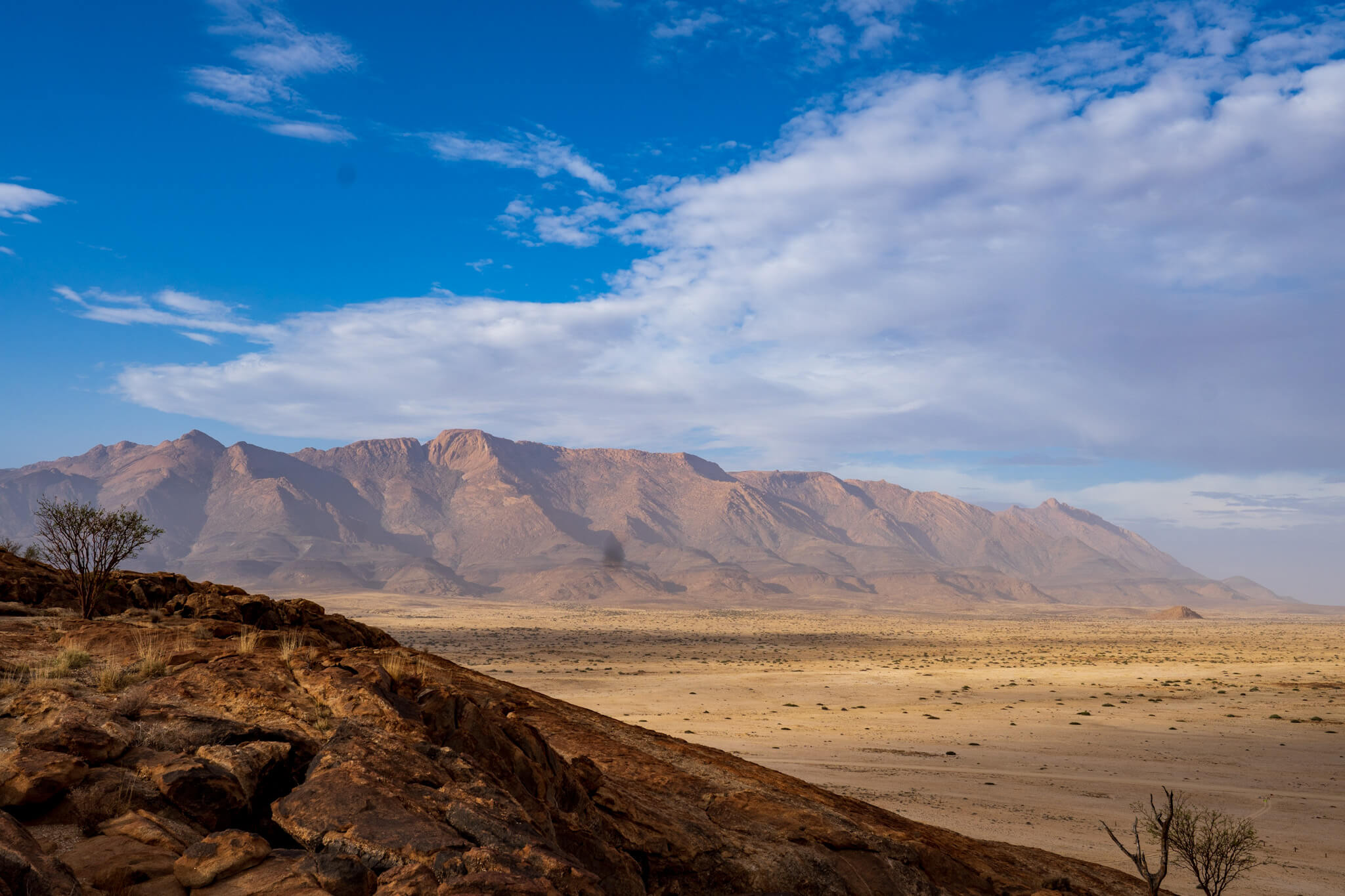
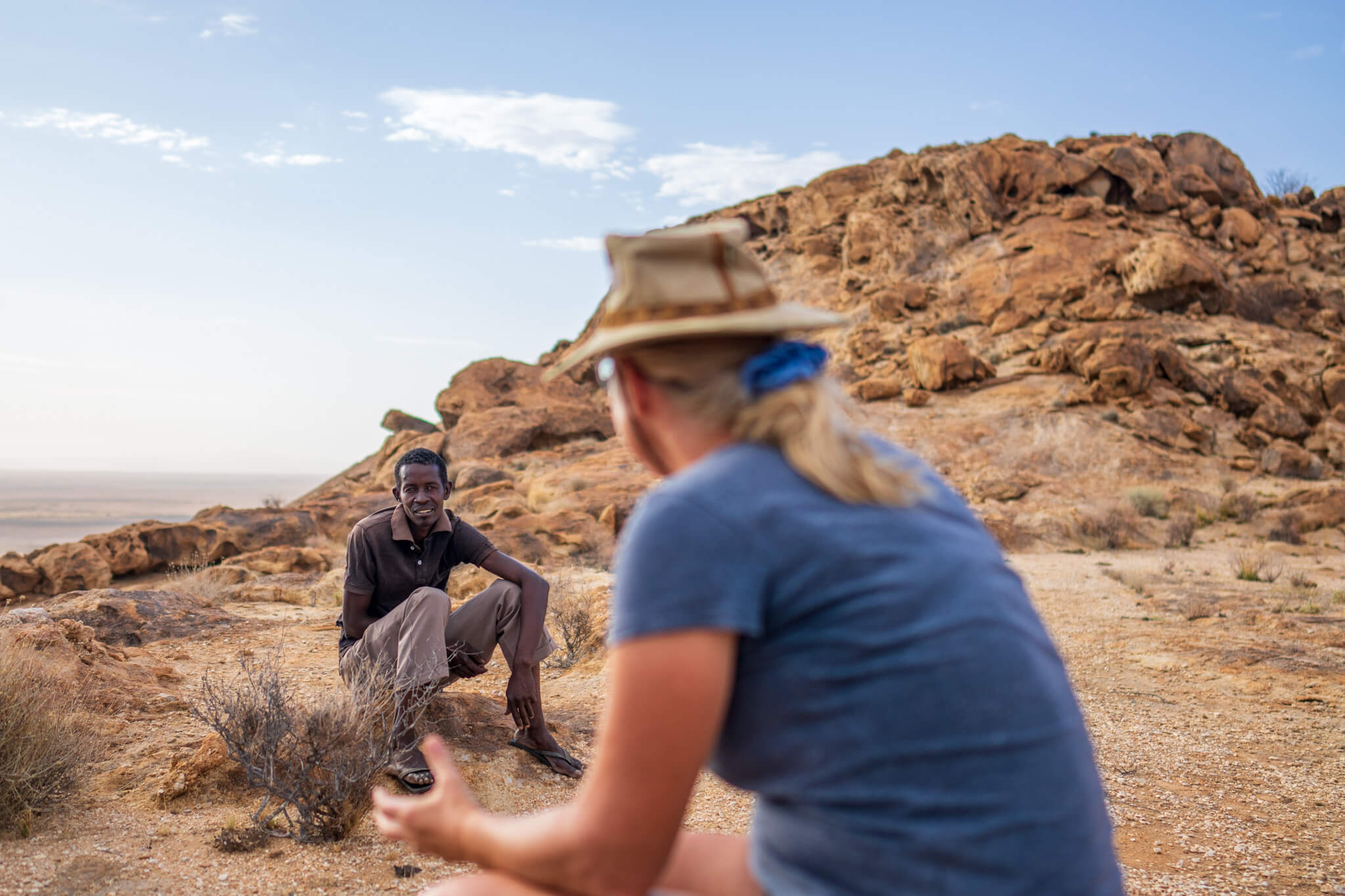
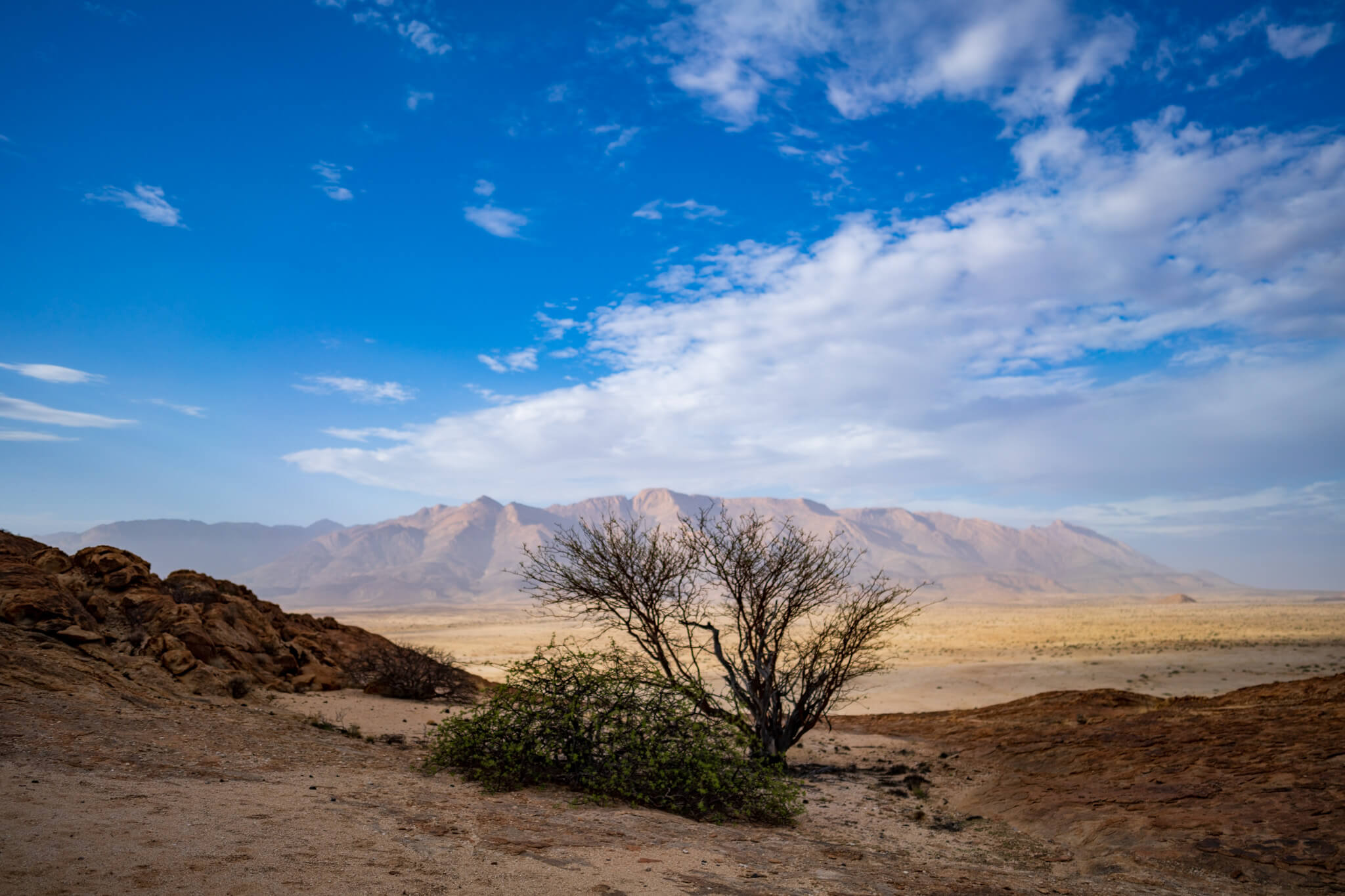
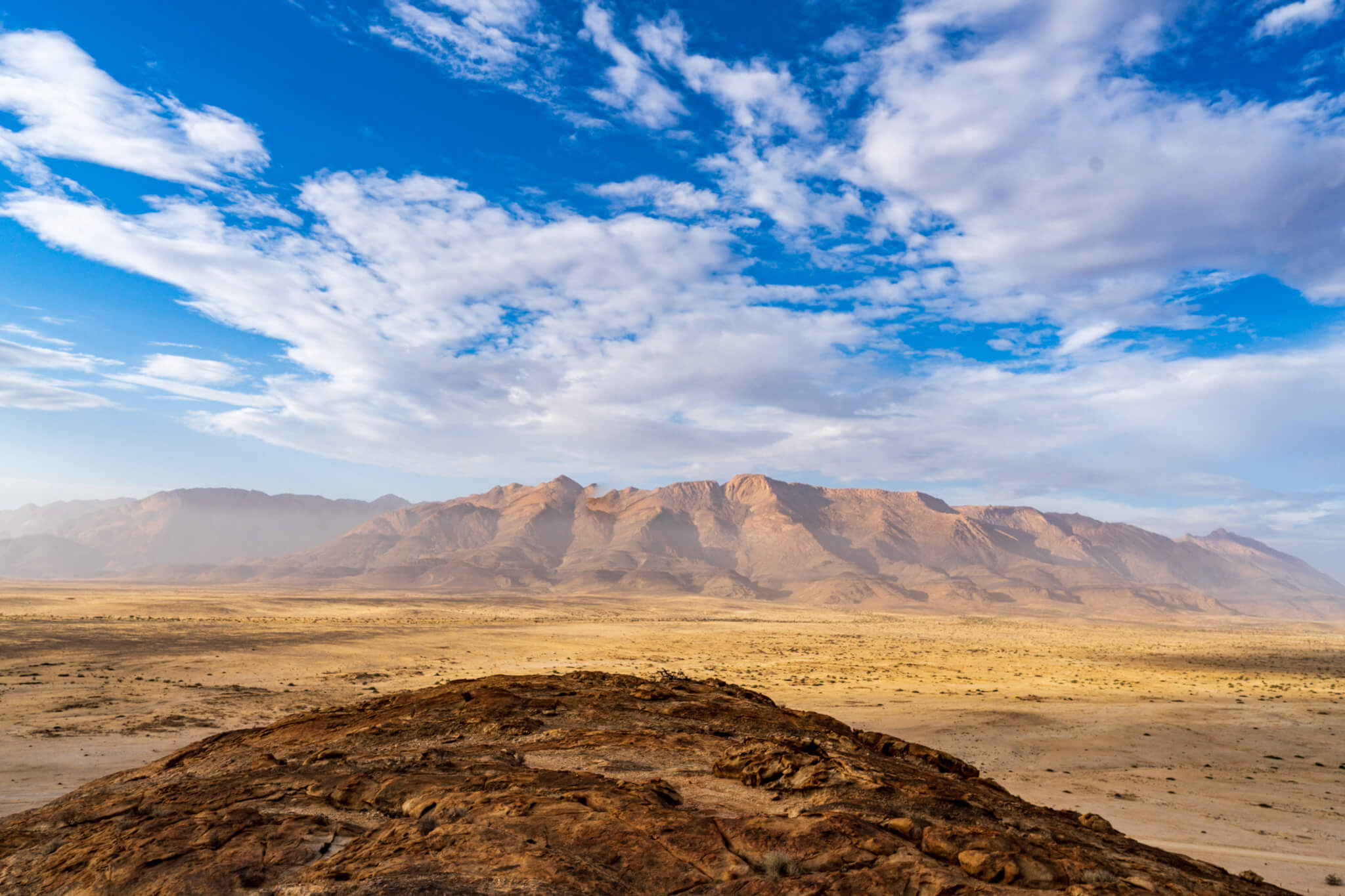
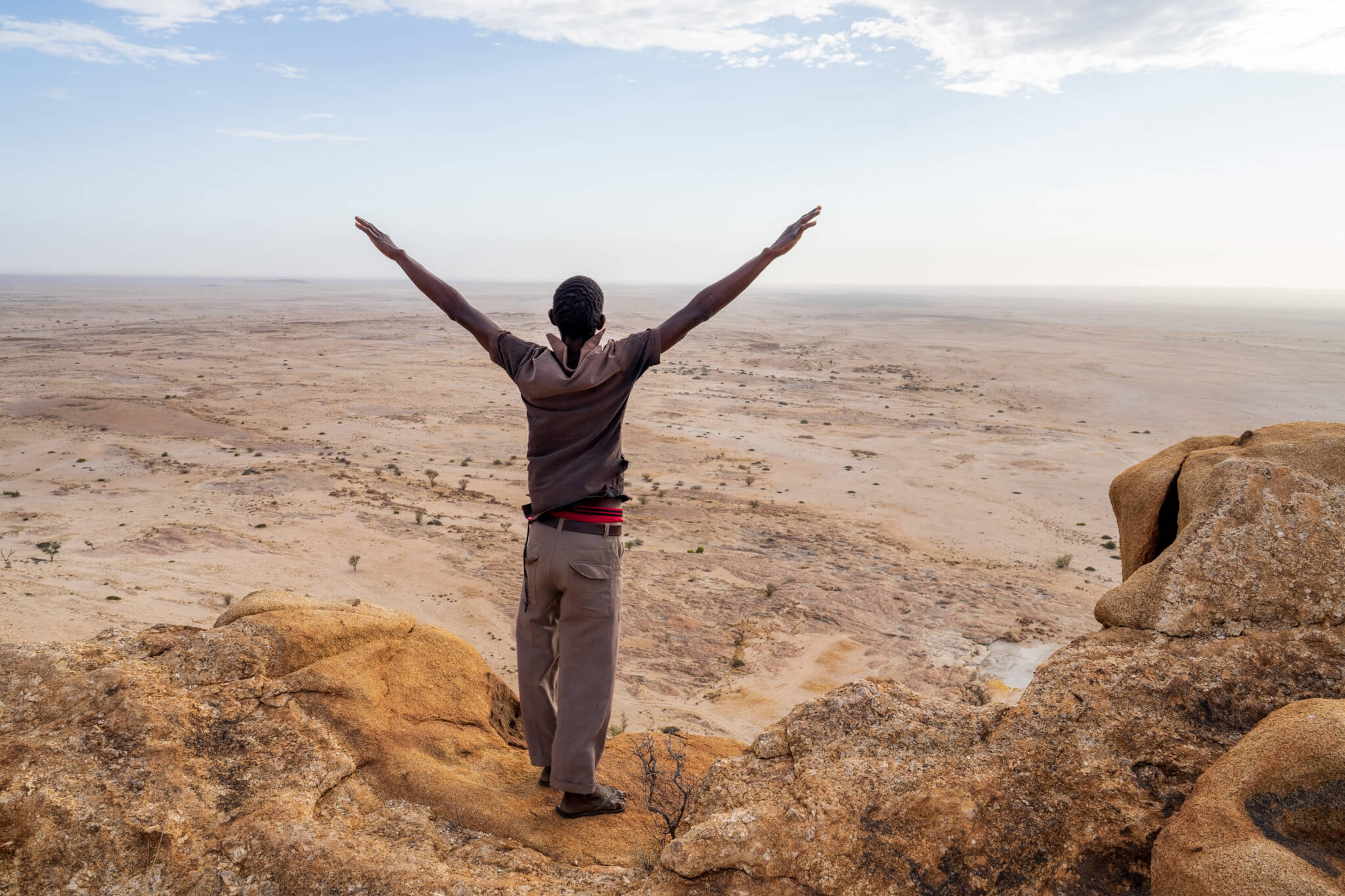
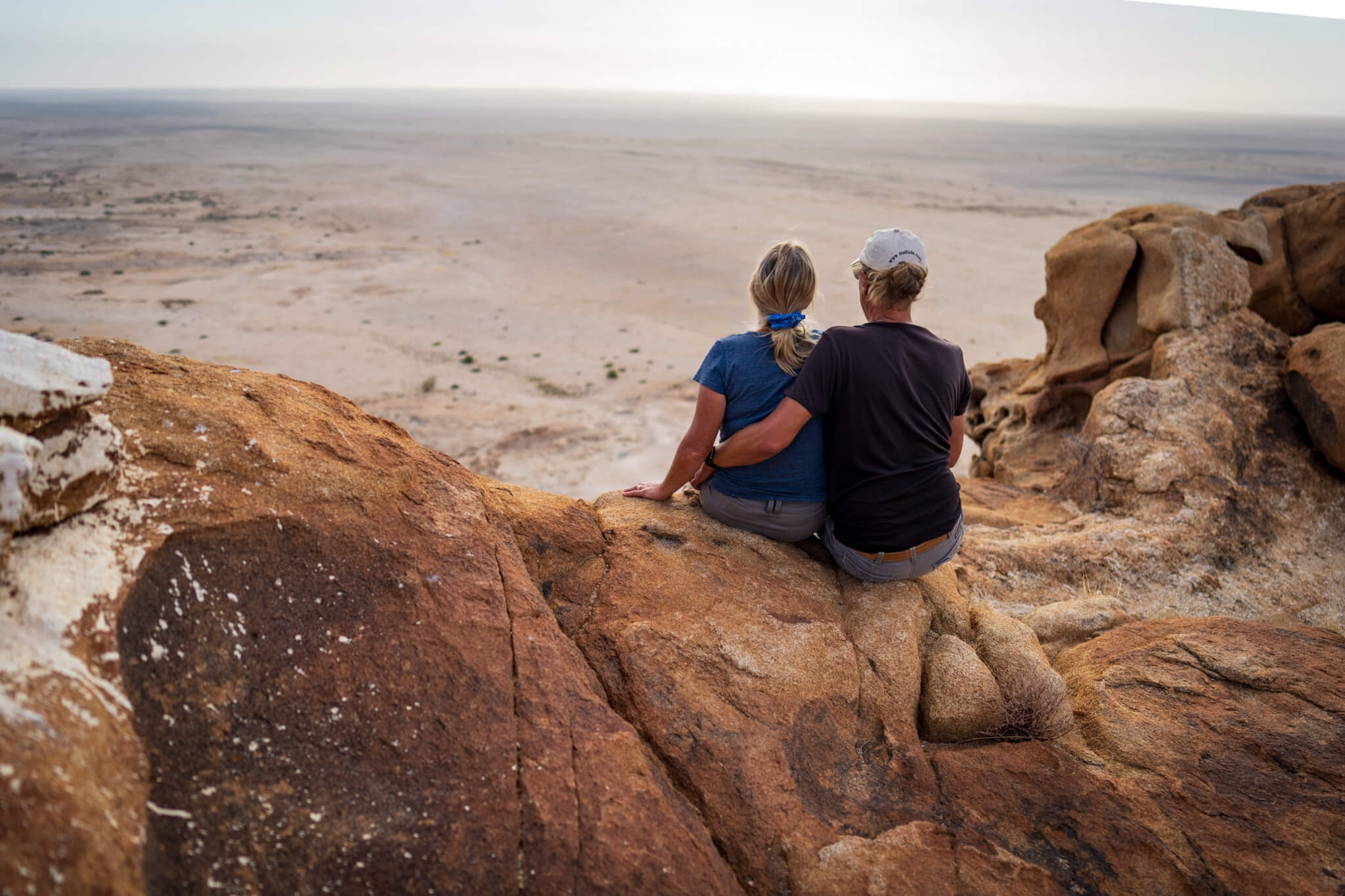
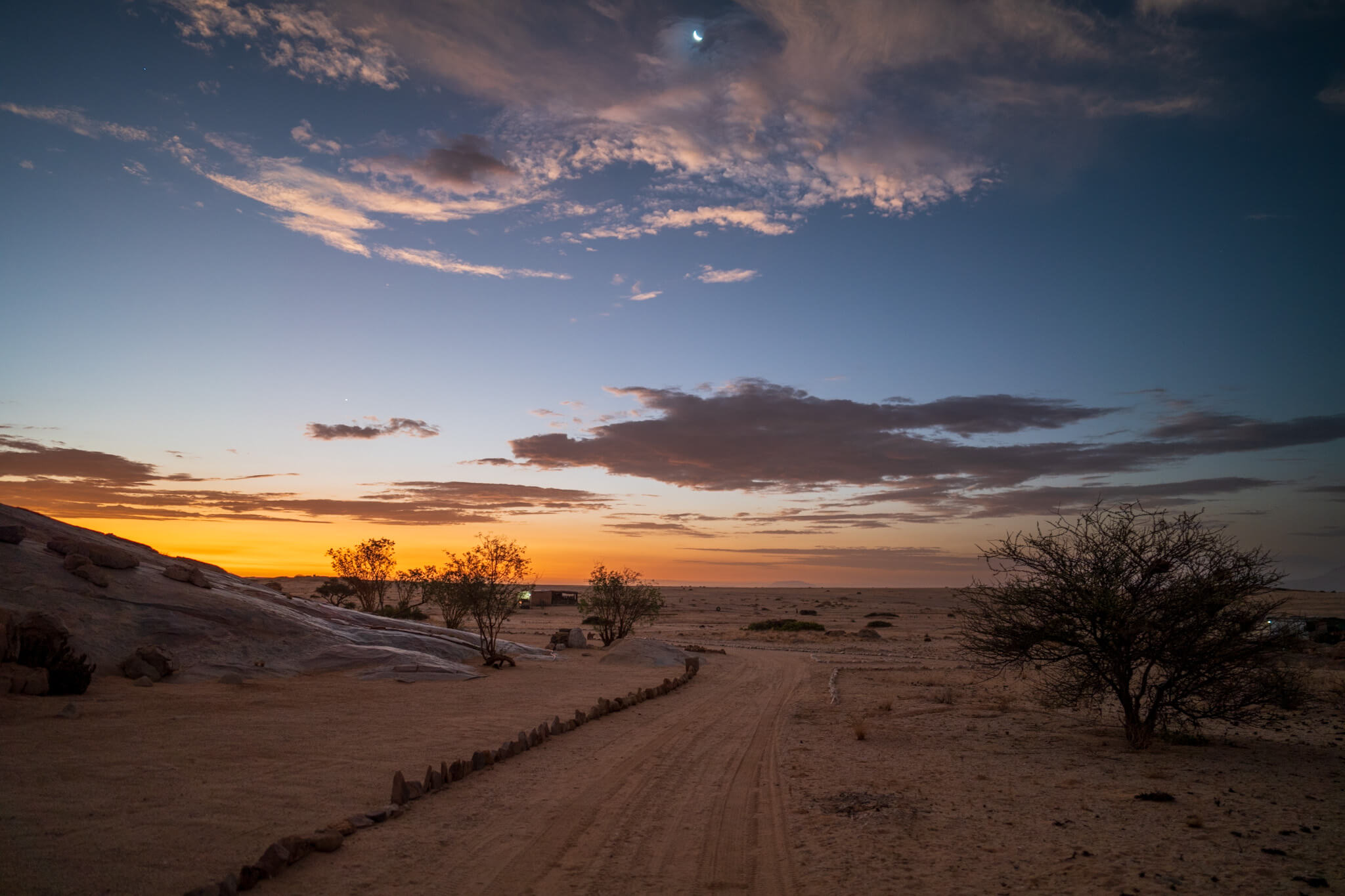
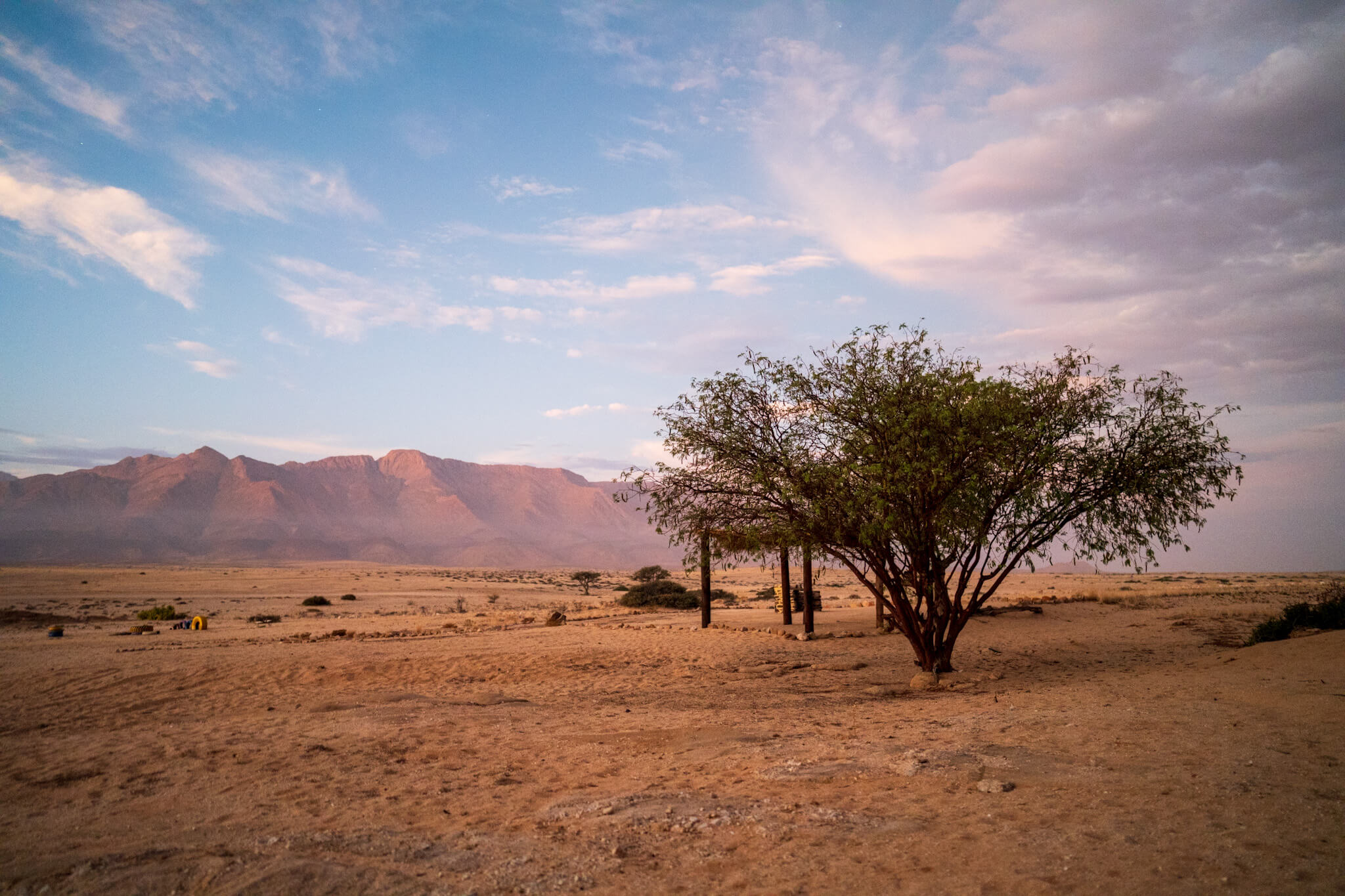
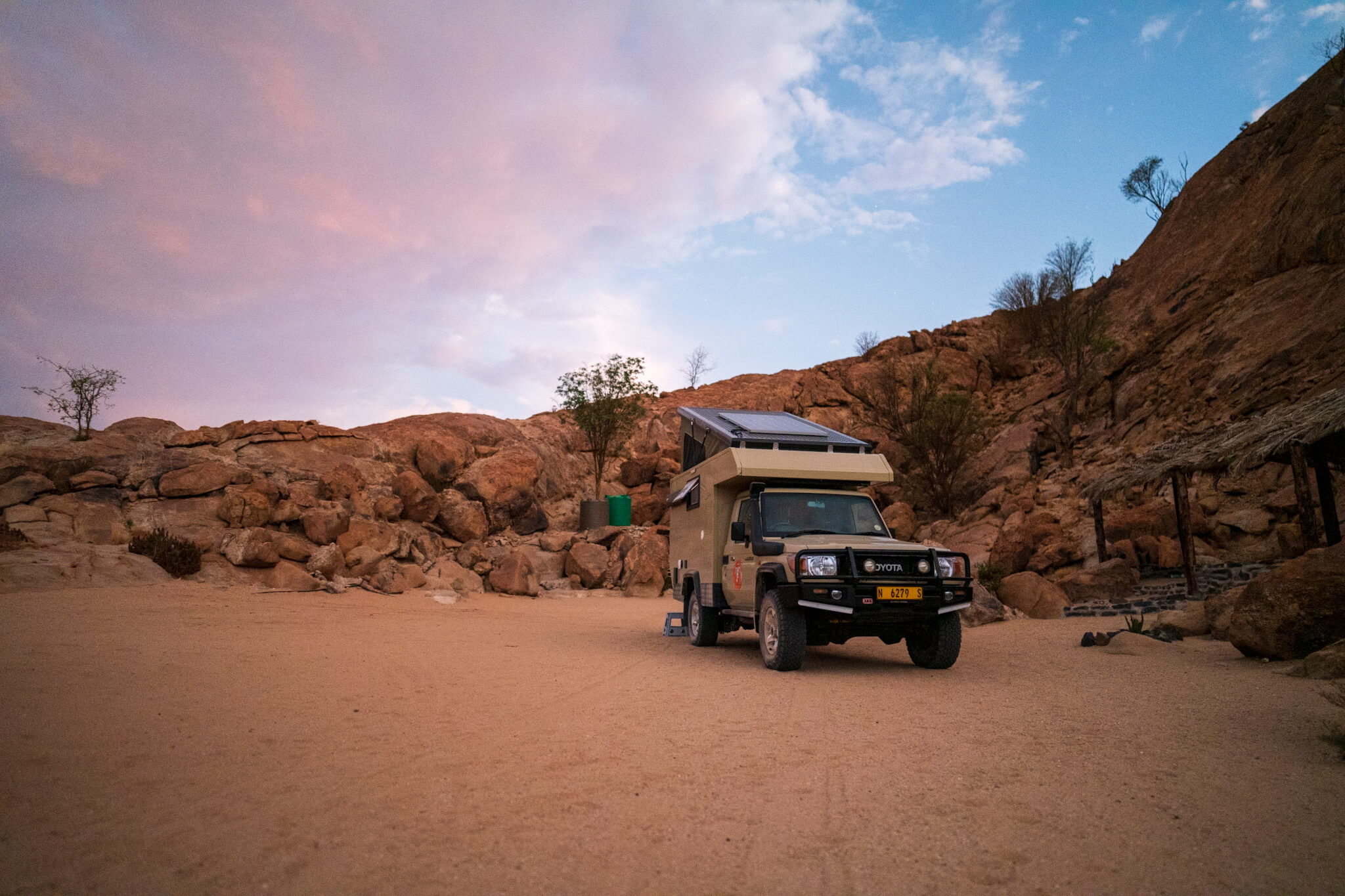
Across the C14 into the desert
Once again we took the opportunity to feast at our favorite restaurant in Swakopmund, the Blue Grass at Platz am Meer. Then we drove via Walvis Bay and the C14 towards Solitaire. We spent the night at the famous Rooiklip Farm, although we couldn’t understand the hype about this place that is sometimes practiced on the Internet. The next stop, Bushman’s Desert Camp, which is not far from Gaub Pass, was a hit. The camp, unknown to us until then, is run with heart and soul by the Namibian Boesmann and his Japanese wife Yuri.
Yuri now lives – because of the school situation – with the two daughters in Swakopmund, and comes to the farm on weekends. Boesmann is a former teacher and guide in Sossusvlei and loves the desert. His eyes lit up and he is a very positive person who we took straight to our hearts. The camps are far enough apart and offer a wonderful view into the desert. We relaxed during two days at this wonderful place, went hiking and were lucky to have two sympathetic Austrians as neighbors, Michi and Ines. With them we also spent some hours and had good conversations.
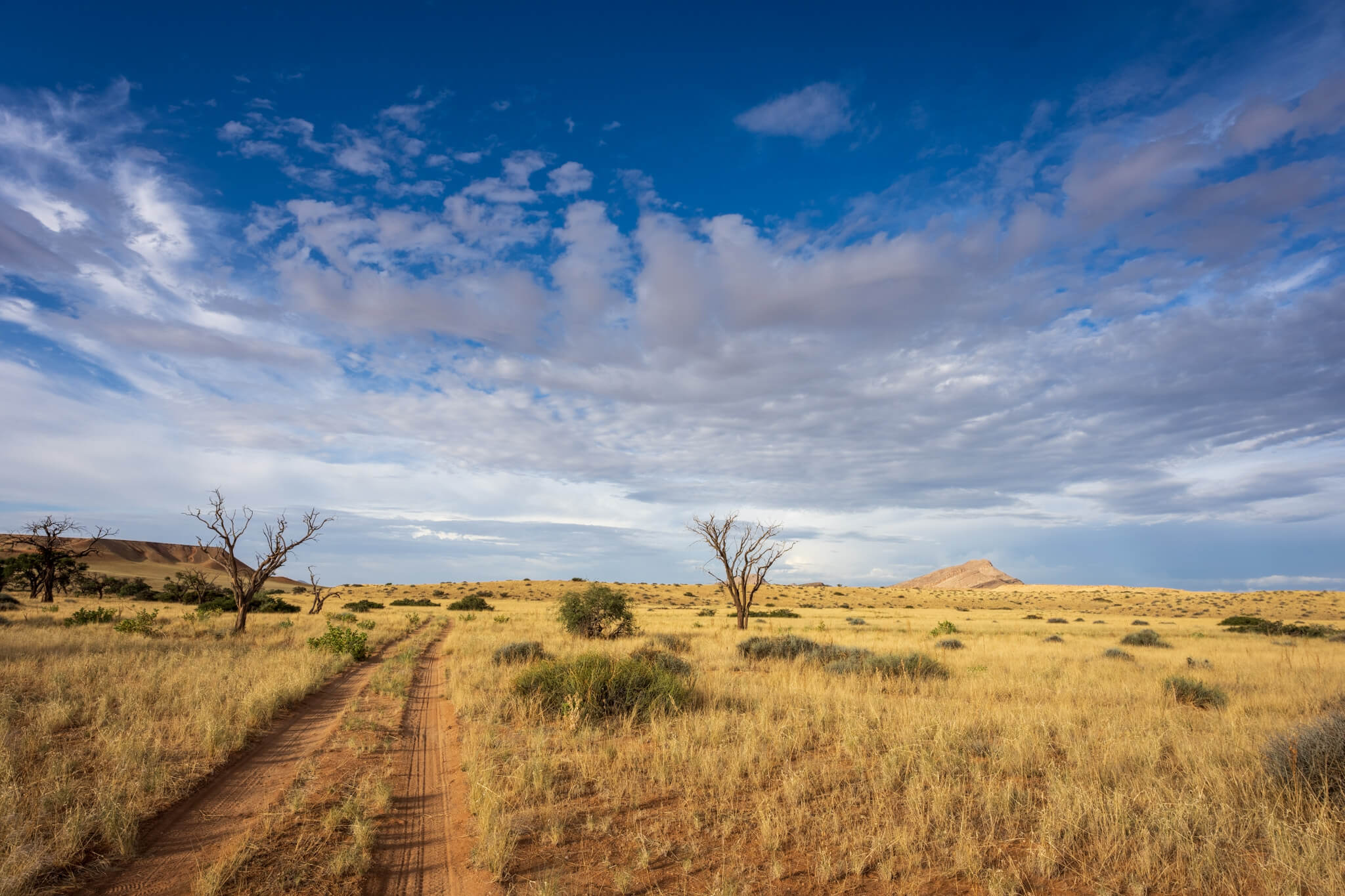
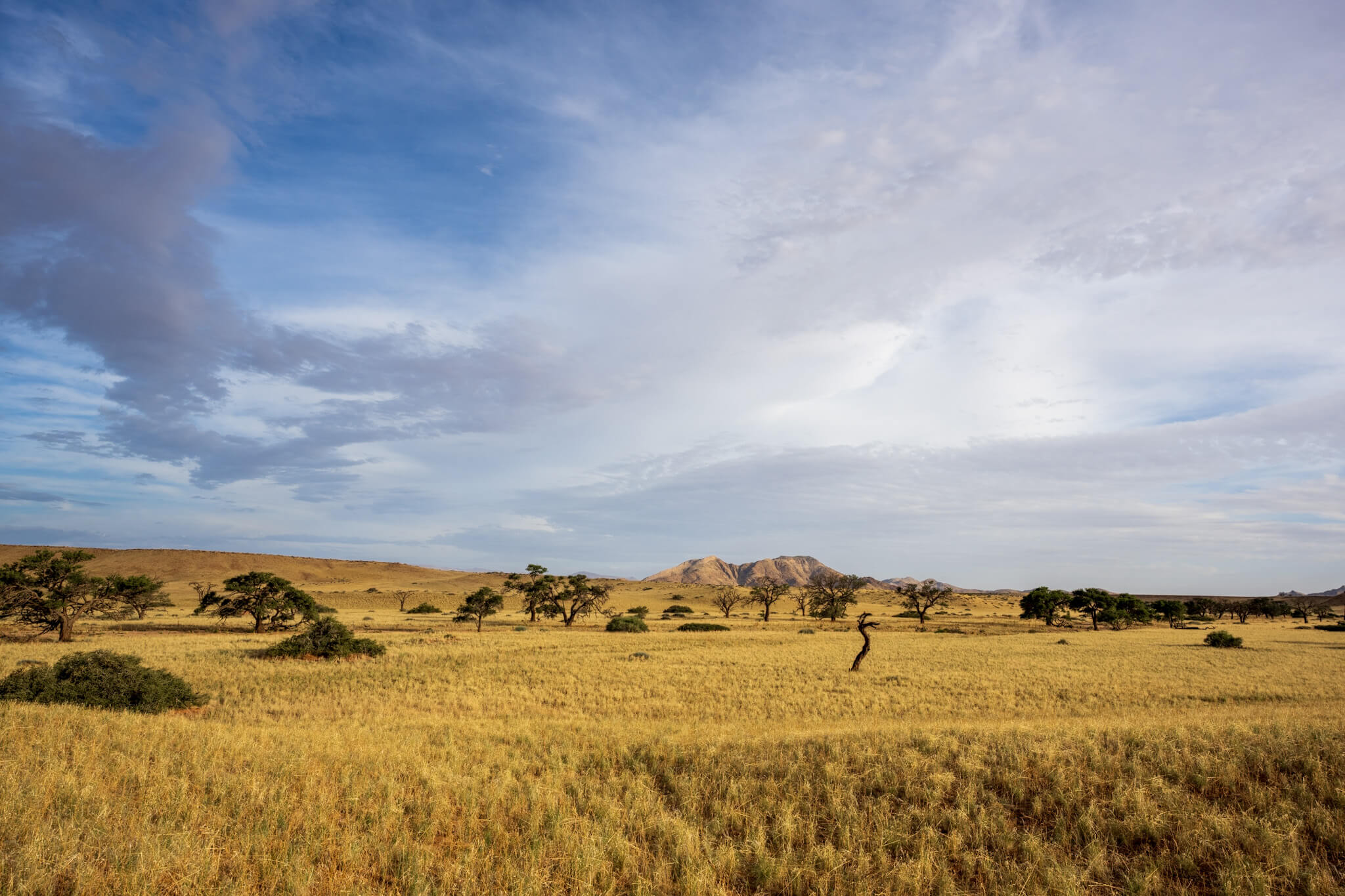
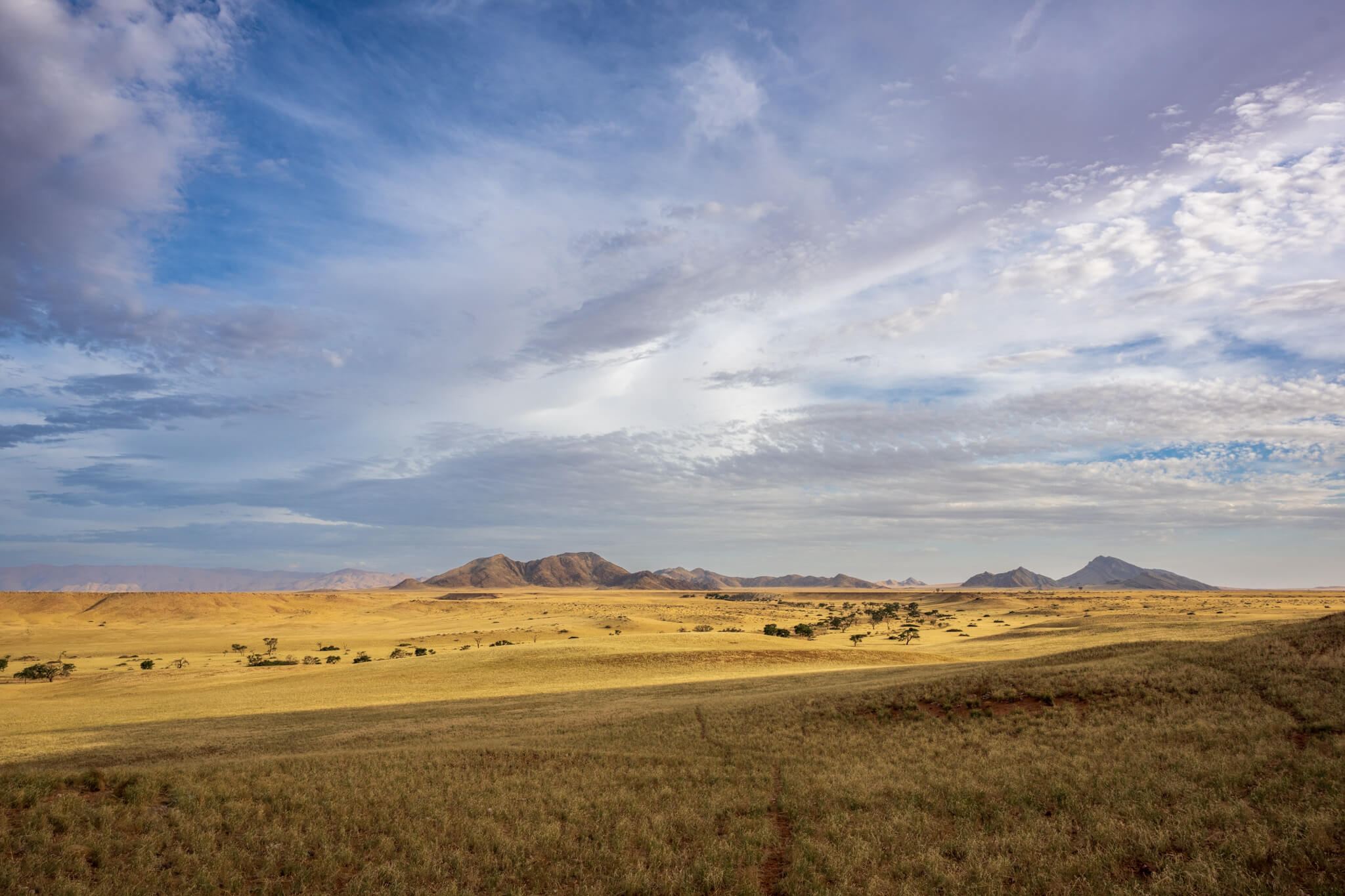
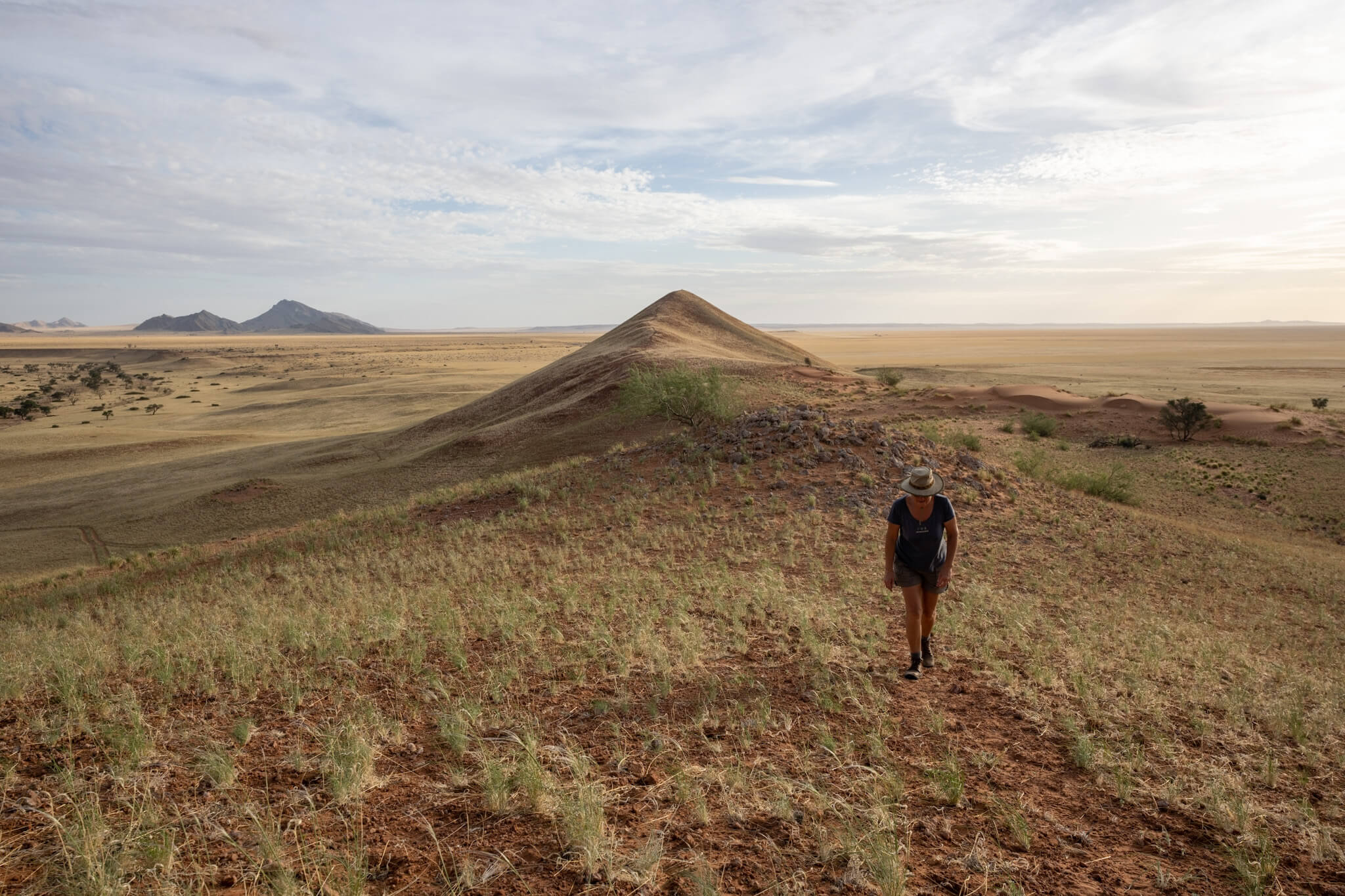
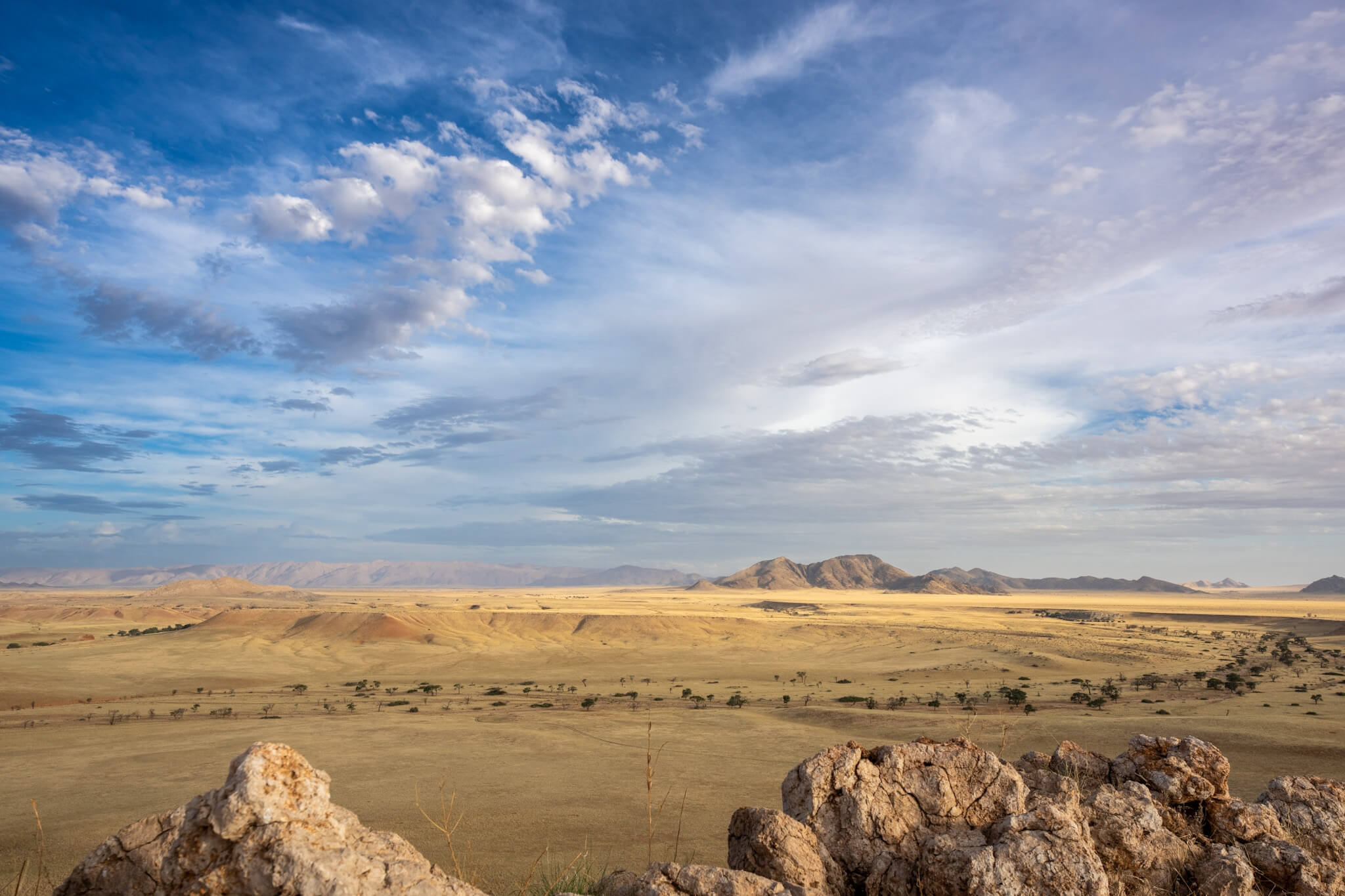
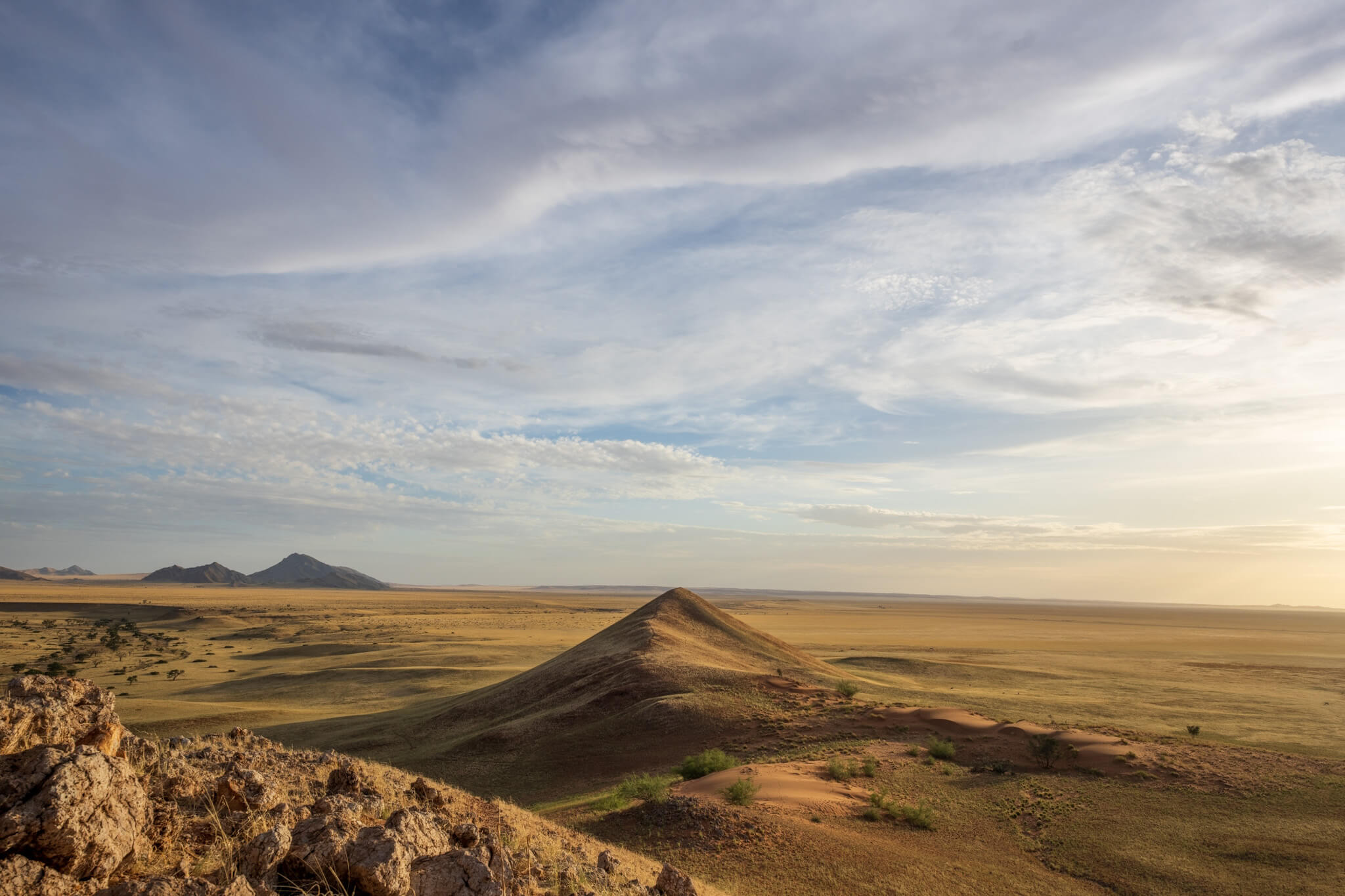
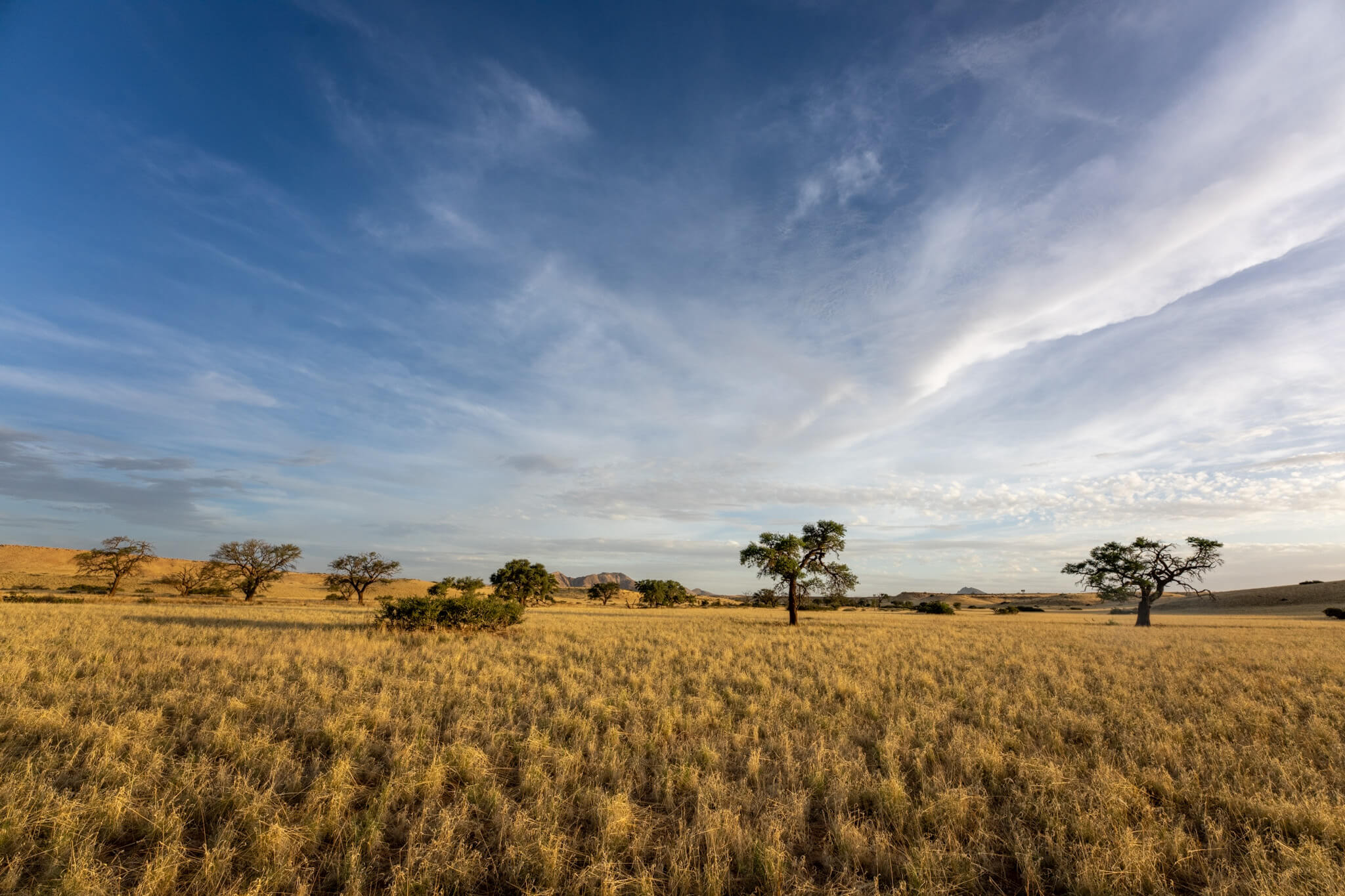
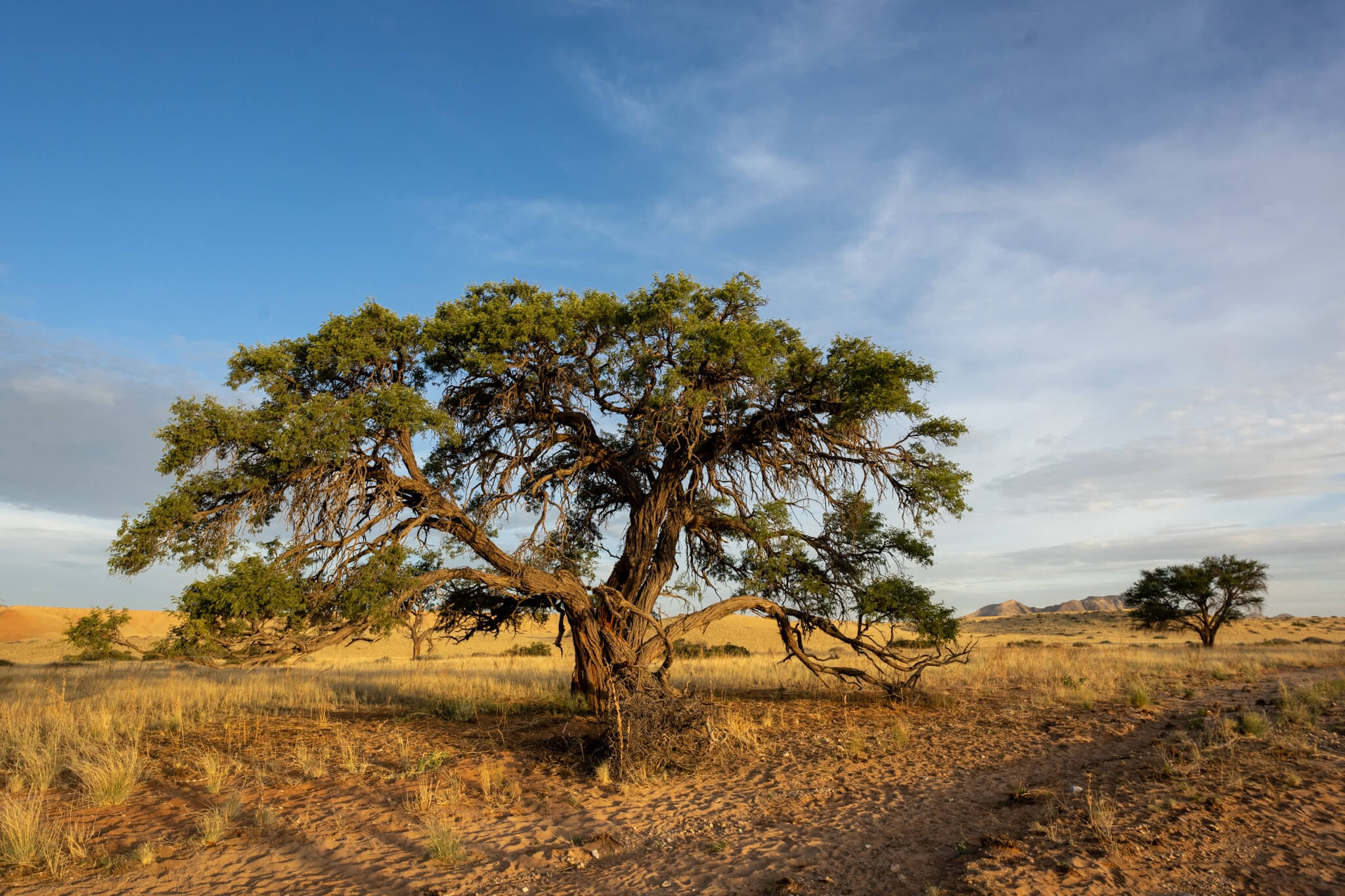
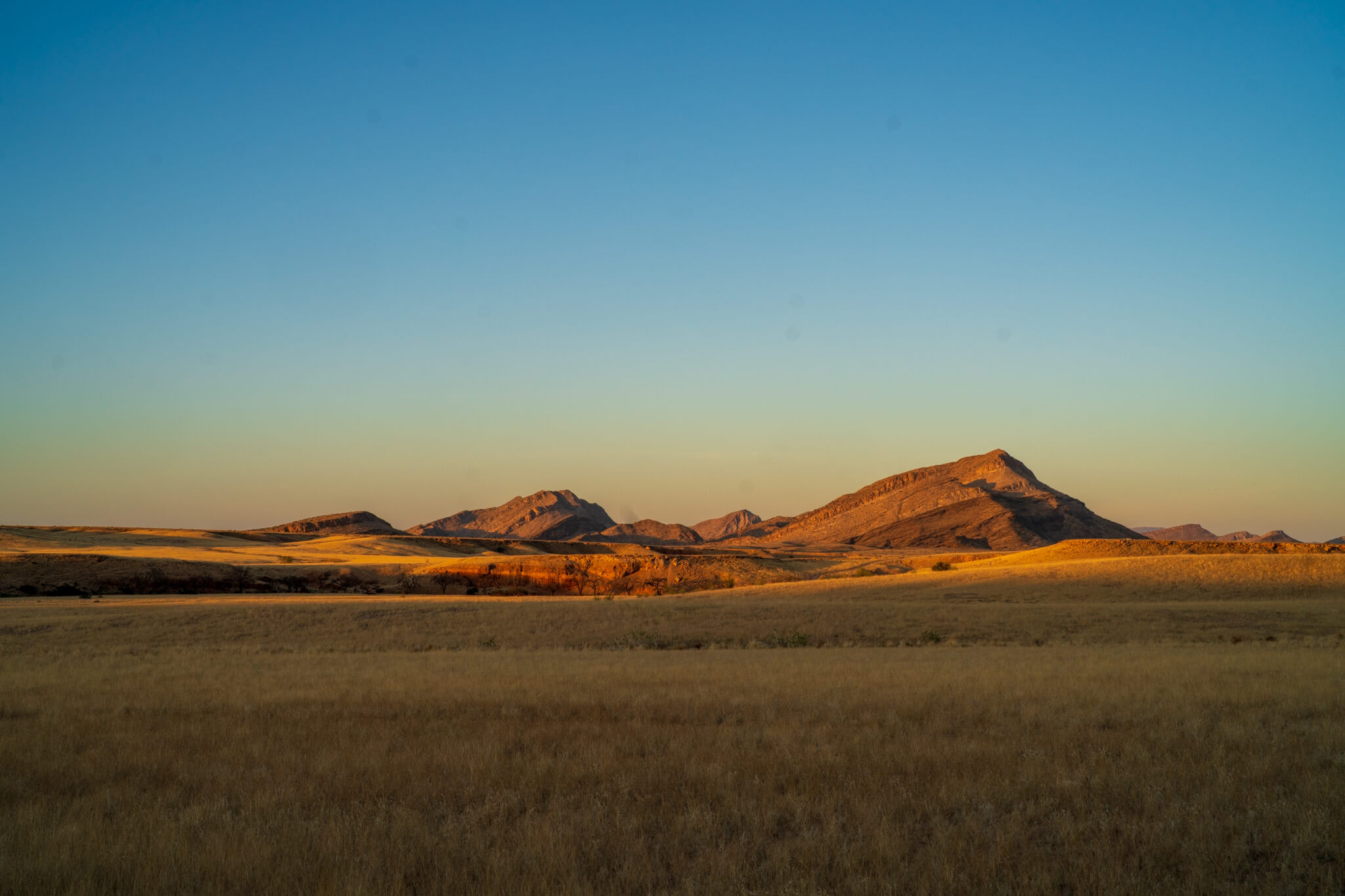
Outtake: When Guido set up the tripod with camera to take this (above) shot, an eagle owl landed on the camera and used the perch to hunt.

Via Mariental and the Wildmoor Farm to the Kgalagadi
From Boesmanns Camp we drove via Maltahöhe to Mariental, bought some groceries there and stopped halfway to Mata Mata at the Wildmoor Farm. This farm offers three different campsites, all three of which have their own appeal. We camped on this, our first visit, at a campsite near the house, about 3 km away, on a hill. This campsite is equipped with water, a shower with toilet and a braai place and also offers a shady place under a tree. We enjoyed ourselves and left the next morning in the direction of Kgalagadi – not without the promise to François, the owner of the farm, to come back.
